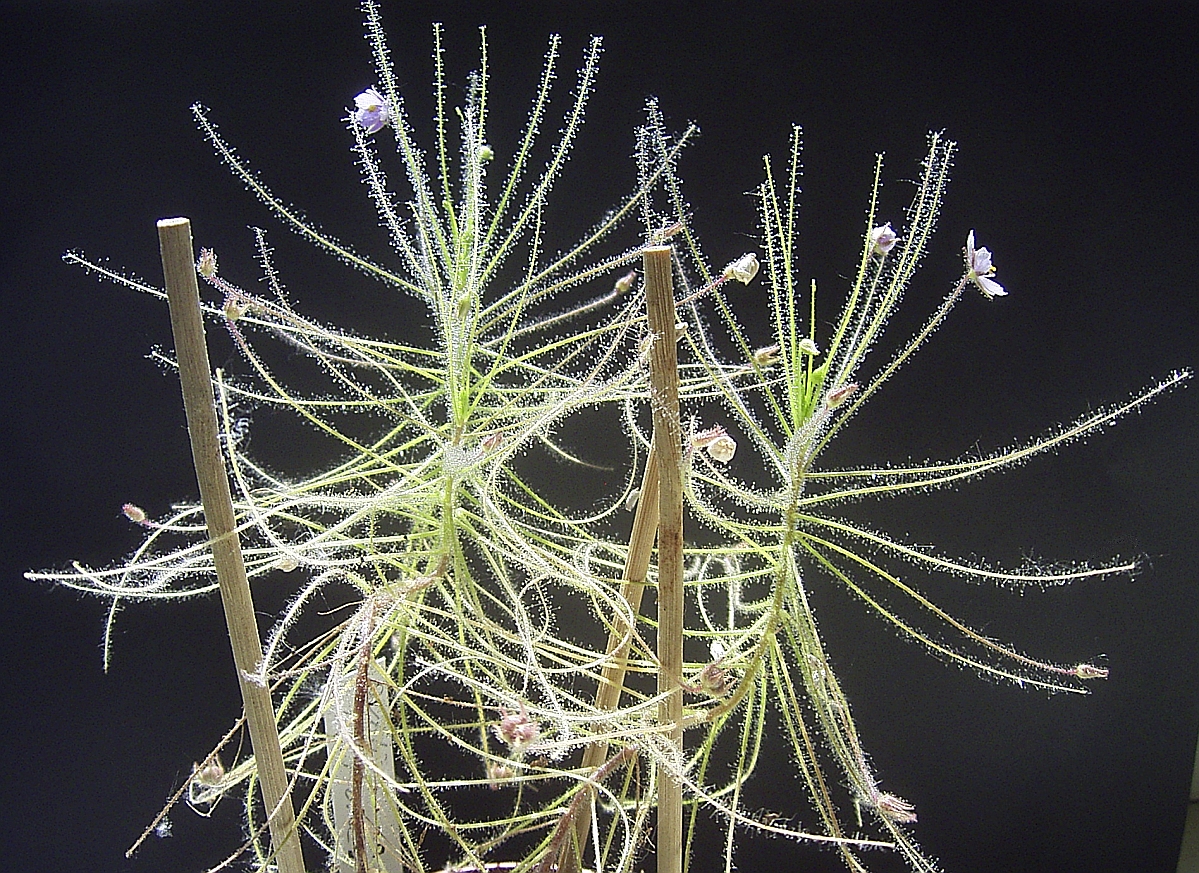Rainbow Plants
Share

Scientific name: Byblis liniflora.
Byblis liniflora is a species of carnivorous plant native to Australia. It is commonly known as the rainbow plant or the lin-leaved sundew. Byblis liniflora is notable for its slender, linear leaves covered in glandular hairs that glisten in the sunlight, giving the plant a shimmering appearance. Despite resembling sundews (Drosera species) in appearance, Byblis liniflora belongs to a different genus within the Droseraceae family. Unlike sundews, which catch prey with sticky tentacles, Byblis liniflora employs a passive trapping mechanism. Its glandular leaves secrete a mucilaginous substance that attracts and ensnares small insects, which then become trapped in the sticky droplets. Byblis liniflora produces delicate, pink or white flowers on tall stalks, adding to its aesthetic appeal. In its natural habitat, it is typically found in sandy or gravelly soils in open areas, such as heathlands or disturbed sites. Cultivation of Byblis liniflora is relatively straightforward, requiring full sunlight, well-draining soil, and consistently moist conditions. It is valued not only for its carnivorous nature but also for its ornamental beauty, making it a popular choice among carnivorous plant enthusiasts.




